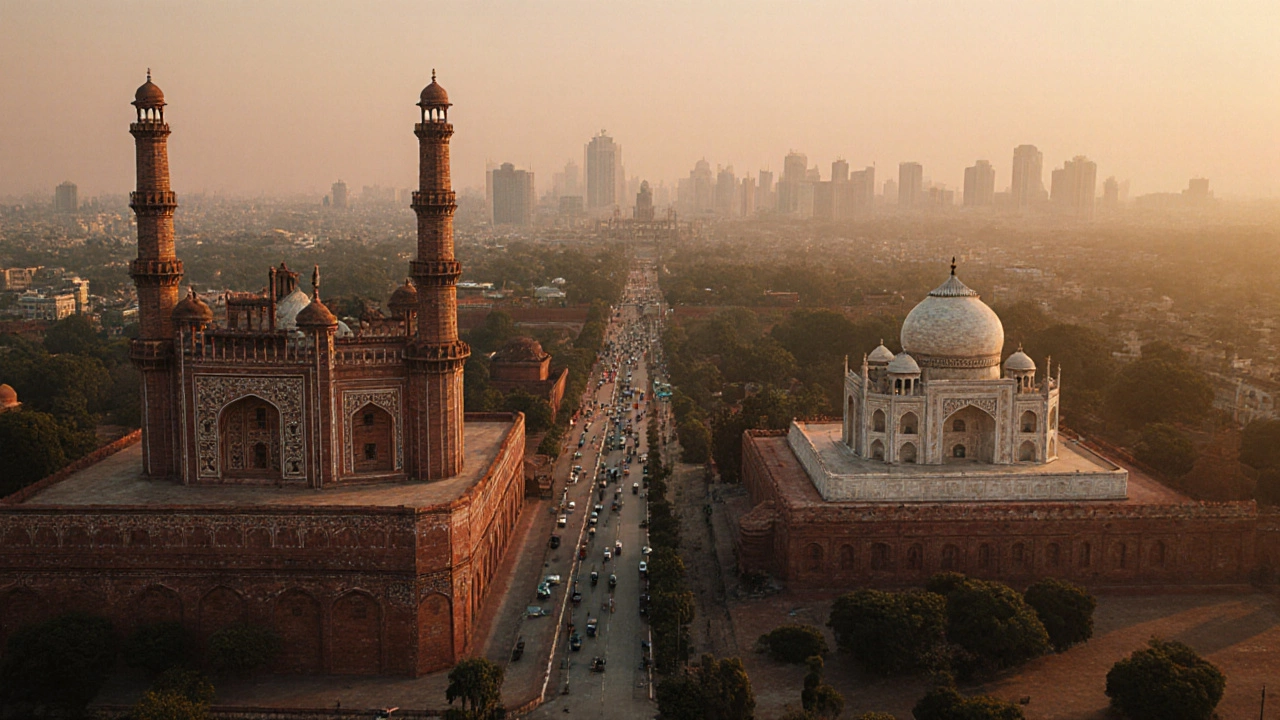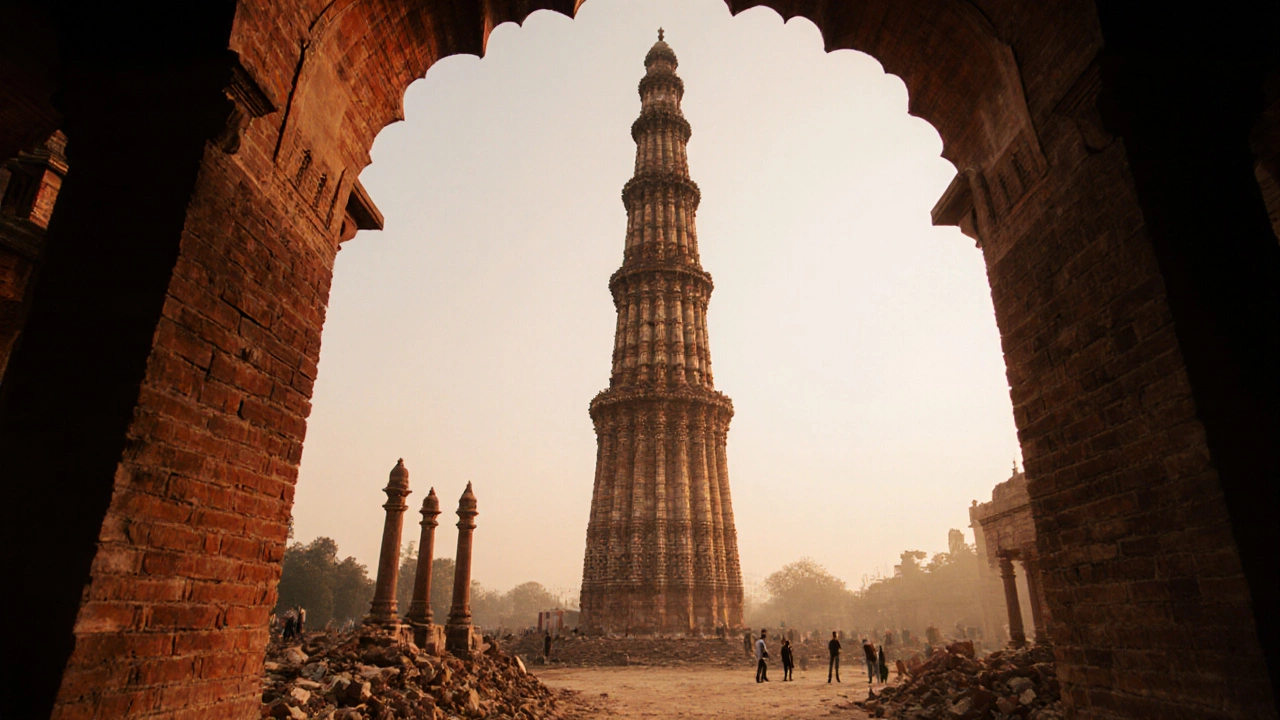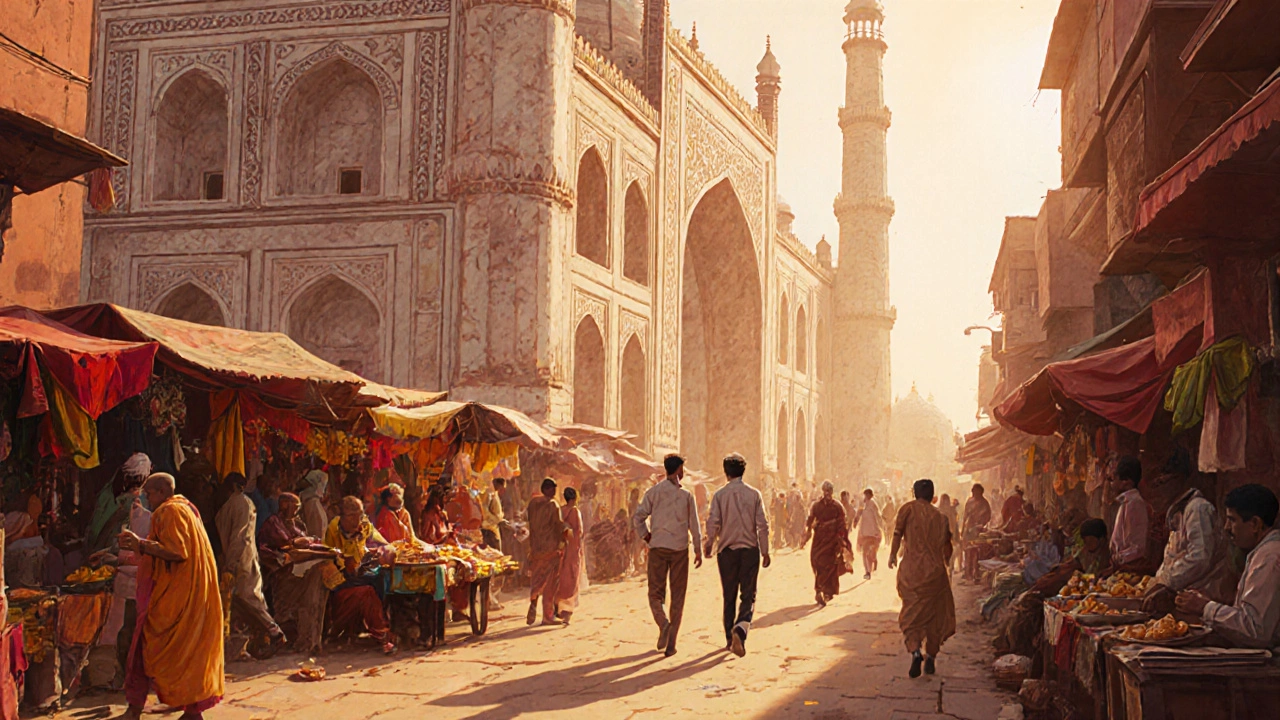India’s City with the Most Heritage Sites - Delhi Revealed
 Oct, 7 2025
Oct, 7 2025
India's Heritage Cities Comparison Tool
This tool compares the number of heritage sites in major Indian cities. Heritage sites include ASI-protected monuments and UNESCO World Heritage Sites.
Delhi
Total Heritage Sites
- 87 ASI Protected
- 4 UNESCO Sites
Agra
Total Heritage Sites
- 30 ASI Protected
- 2 UNESCO Sites
Jaipur
Total Heritage Sites
- 28 ASI Protected
- 1 UNESCO Site
Kolkata
Total Heritage Sites
- 22 ASI Protected
- 1 UNESCO Site
Varanasi
Total Heritage Sites
- 19 ASI Protected
- 0 UNESCO Sites
How We Count Heritage Sites
We count all ASI-protected monuments within a city's boundaries plus any UNESCO World Heritage Sites physically located there.
Archaeological Survey of India (ASI): Protects over 3,600 monuments
UNESCO: Designates sites based on universal cultural or natural value
Delhi Leads the Heritage Race!
Delhi holds the largest concentration of heritage sites in India with a total of 91 sites (87 ASI + 4 UNESCO), far surpassing other cities like Agra (32 sites) and Jaipur (29 sites).
Top Heritage Sites in Delhi
- Qutub Minar – World's tallest brick minaret
- Humayun’s Tomb – Palladian masterpiece inspiring Taj Mahal
- Red Fort – Iconic 17th-century fortress
- Jama Masjid – Largest mosque in India
- India Gate – 1931 war memorial
When you picture India’s cultural treasure trove, a handful of cities pop up: Jaipur’s pink forts, Agra’s marble marvels, and the bustling lanes of Delhi. But if you’re wondering which city actually houses the highest number of heritage sites, the answer is Delhi - the capital that blends ancient monuments with colonial architecture like few other places.
Quick Takeaways
- Delhi holds the largest concentration of heritage sites in India, with over 80 ASI‑protected monuments and four UNESCO World Heritage Sites.
- The city’s heritage sites span three eras: ancient Delhi Sultanate, Mughal, and British Raj.
- Top must‑see spots include Qutub Minar, Humayun’s Tomb, Red Fort, and the UNESCO‑listed Monuments of Mughal Delhi.
- Compared with other heritage‑rich cities, Delhi leads in total site count and diversity of architectural styles.
- Practical tips: use a heritage‑tour pass, visit early mornings, and pair monuments with nearby food markets for a full experience.
How India Counts Its Heritage Sites
India’s heritage inventory comes from two main bodies. The Archaeological Survey of India (ASI) protects more than 3,600 monuments, ranging from ancient temples to colonial forts. Meanwhile, UNESCO designates World Heritage Sites based on universal cultural or natural value. Both lists overlap but serve different purposes: ASI governs preservation and access, while UNESCO brings global recognition and tourism focus.
When we talk about a city’s heritage count, we add together all ASI‑protected sites located within its administrative boundaries plus any UNESCO sites physically situated there. This method gives a clear picture of the total heritage footprint.

Why Delhi Tops the List
Delhi’s heritage richness stems from its role as a political and cultural hub for over a millennium. The city has been the capital of several empires, each leaving a distinct architectural imprint.
Delhi currently boasts:
- ~87 ASI‑protected monuments, ranging from the 7th‑century YamunaRiver ghats to 19th‑century colonial buildings.
- 4 UNESCO World Heritage Sites: Qutub Minar, Humayun’s Tomb, Red Fort, and the group designation “Monuments of Mughal Delhi”.
- A blend of religious, military, and civic structures - temples, mosques, forts, tombs, and markets.
This sheer variety and number outpace other Indian cities. For instance, Agra has around 30 ASI sites and 2 UNESCO sites, while Jaipur lists roughly 30 ASI monuments with a single UNESCO designation.
Top Heritage Sites to Explore in Delhi
Below are the must‑see locations that illustrate Delhi’s layered history.
- Qutub Minar - The world’s tallest brick minaret, built in 1193CE by Qutb‑ud‑Din Aibak. Its intricate carvings and surrounding rubble‑filled complex form a UNESCO World Heritage Site.
- Humayun’s Tomb - A palladian masterpiece from 1565CE that inspired the TajMahal’s design. The garden‑tomb reflects Persian‑influenced Mughal architecture.
- Red Fort - The iconic 17th‑century fortress built by ShahJahan. Its massive red sandstone walls enclose palaces, museums, and the famous “Lahori Gate”.
- Jama Masjid - One of the largest mosques in India, commissioned by ShahJahan in 1656CE. Its courtyard can accommodate 25,000 worshippers.
- India Gate and the surrounding Rajpath avenue - A 1931 war memorial that epitomizes colonial-era urban planning.
- Lotus Temple - A modern Bahá’í House of Worship completed in 1986, renowned for its flower‑shaped marble structure.
- Mehrauli Archaeological Park - A sprawling 200‑acre area that houses more than 100 monuments, from the 12th‑century Balban’s Tomb to 19th‑century British barracks.
- Chandni Chowk & Old Delhi - The historic market district where narrow lanes host centuries‑old havelis, spice bazaars, and the famous Gurudwara Bangla Sahib.
These sites collectively represent the heritage sites in India narrative, showing why Delhi is the top holder.

How Delhi Compares to Other Heritage‑Rich Cities
| City | ASI‑Protected Monuments | UNESCO World Heritage Sites | Total Heritage Sites |
|---|---|---|---|
| Delhi | 87 | 4 | 91 |
| Agra | 30 | 2 | 32 |
| Jaipur | 28 | 1 | 29 |
| Kolkata | 22 | 1 | 23 |
| Varanasi | 19 | 0 | 19 |
The table makes it clear: Delhi leads by a wide margin, not only in raw numbers but also in the variety of eras represented.
Planning a Heritage Tour in Delhi
To get the most out of Delhi’s heritage circuit, follow these practical pointers.
- Buy a Heritage Pass: The ASI offers a “Heritage of Delhi” pass that grants entry to over 30 monuments for a single fee (≈₹500). It saves time and reduces ticket queues.
- Start Early: Most sites open at 9AM; arriving at opening time helps avoid crowds, especially at Qutub Minar and Red Fort.
- Combine Walking and Metro: Use the Delhi Metro for longer distances (e.g., from Qutub Minar to Old Delhi) and walk the short stretches to soak in the ambience.
- Dress Respectfully: Temples and mosques require modest attire. Carry a scarf for quick coverage.
- Don’t Miss the Food: After a monument visit, head to nearby eateries-Paranthe Wali Gali in Old Delhi for stuffed flatbreads, or Karim’s for Mughlai kebabs.
- Hire a Knowledgeable Guide: For deeper stories, a certified ASI guide can explain architectural nuances and historical anecdotes.
With a well‑planned itinerary, you can cover the major sites in 2‑3 days without feeling rushed.
Frequently Asked Questions
Which city in India has the most heritage sites?
Delhi holds the largest number of heritage sites, with around 87 ASI‑protected monuments and four UNESCO World Heritage Sites, totaling over 90 locations.
How many UNESCO World Heritage Sites are in Delhi?
Delhi has four UNESCO‑listed sites: Qutub Minar, Humayun’s Tomb, Red Fort, and the collective “Monuments of Mughal Delhi”.
Can I visit all major monuments in a single day?
It’s possible to hit the main highlights (Qutub Minar, Humayun’s Tomb, Red Fort, Jama Masjid) in one early‑morning-to‑evening schedule, but a relaxed visit usually needs at least two days.
Is there a discount for tourists on heritage entry fees?
Foreign tourists receive a 50% concession on most ASI monument tickets. The Heritage Pass also offers a bulk discount for multiple entries.
What’s the best time of year to explore Delhi’s heritage sites?
October to March provides cool, dry weather, perfect for walking tours. The city’s festive season (Diwali, Republic Day) also adds cultural flair.